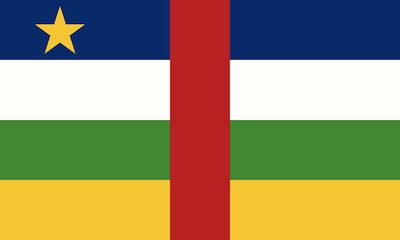 Sango (or Sangho) is the official language of the Central African Republic with approximately 1.6 million second-language speakers and over 400,000 native speakers. But while Sango is spoken from Bangui (the capital of CAR) to trading posts in southern Chad, there is still much debate regarding the origins and development of this language. Is Sango a “pure” language native to this region or a hybrid? This article explores the current linguistic research.
Sango (or Sangho) is the official language of the Central African Republic with approximately 1.6 million second-language speakers and over 400,000 native speakers. But while Sango is spoken from Bangui (the capital of CAR) to trading posts in southern Chad, there is still much debate regarding the origins and development of this language. Is Sango a “pure” language native to this region or a hybrid? This article explores the current linguistic research.
The Niger-Congo A group, a major language group of Africa, is the origin language of most languages between the Niger and the Congo. The largest tributary of the Congo, the Ubangi, is the site of Ubangian, with Sango being one of its many forms. But Ubangian is completely distinct from other languages in the Niger-Congo group, and its uniqueness may call for a new classification.
The real question is whether Sango and its Ubangian relatives are completely native to that region and if it is a “pure” language or a lingua franca that arose from a pidgin. A “pidgin” is a mixed language that develops when two or more cultures cohabitate. For example, if Egypt continued south along with the Nile River to Sudan, a pidgin might develop as a result of the mixing of Egyptian and Sudanese cultures. For many years experts believed that Ubangian was connected to Congolese as a pidgin through similarities in structure to the Ngbandi languages that are wholly categorized as Niger-Congo A.
Some linguists (Marcel Diki-Kidri, Charles H. Morrill) reject the notion that Sango ever was a pidgin but do admit the strong relationship between Ngbandi and Sango: “It is this striking similarity of basic vocabulary that provides the most conclusive linguistic evidence that Sango and Ngbandi both stem from the same linguistic source.” However, in 2008, Gerrit Dimmendaal and other researchers rejected the theory that Ubangian languages have anything to do with Niger-Congo languages, and found that all of Sango’s structures are from Central Africa itself.
So many see Sango as a pure language from the heart of Africa. Sango has modernized over the years and has elements of Western influence. (The alphabet uses 22 of the 26 Western characters.) This influence came after the strong presence of the French in the CAR until 1960, when French was the first language in education. European missionaries and military personnel were actually proponents of the Sango language, ironically, because an alternative speech could symbolize a rebellion. Since 1996 Sango has shared official status with French in the Central African Republic.
As Africa’s economies continue to grow and Africa’s influence spreads globally, cultures and languages will blend and mix—more frequently and more rapidly. Will there be any reformations of the major language families of Africa in the years to come?
For an overview of our translation expertise, visit our media and marketing translation page.



